Sri Lanka propitiates China but continues balancing act with India
Sri Lankan missions abroad have been instructed not to attend any official functions of Taiwanese missions that operate as cultural, economic or educational offices or meetings attended by the Dalai Lama. However, until last year, several leading Buddhist monks of Sri Lanka had participated in religious functions and conferences together with the Dalai Lama
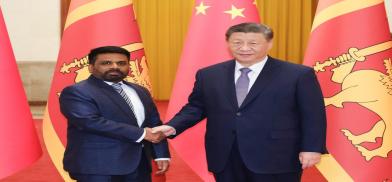
In an unusual move on the eve of Sri Lankan President Anura Kumara Dissanayake’s official visit to China, the government thought it was necessary to reiterate the 'One-China policy' and put the record straight that Taiwan and Tibet are part of the People’s Republic of China. Although Sri Lanka was always committed to the One-China policy, there was an unwritten covenant to refrain from directly referring to Tibet or its religious patriarch Dalai Lama due to the sentiments of Sri Lanka’s Buddhist majority.
In his first address to the nation, President Dissanayake emphasized that Sri Lanka, as an island nation, has the potential to attain a higher standing in the international arena by adopting a non-aligned foreign policy. The close development partnership with China must be viewed in terms of neutrality which aims to avoid reliance on or alignment with any regional power or a global power bloc.
It is important for Sri Lanka’s leadership to balance the geopolitical undercurrents prevailing in the Indian Ocean region. Dissanayake kept his priorities right by visiting India first, thus stressing the message that the new government did not want to send any wrong signals. Being a small island nation strategically situated in the Indian Ocean, Sri Lanka is keen to have cordial relations with both emerging powerhouses with not just regional but global ambitions.
Support on Taiwan on Tibet
It is a fact that Colombo has always accepted the People’s Republic as "One China" and has treated Taiwan as a province of China. However, on the eve of the visit of Dissanayake to Beijing, the new government quite unusually got the cabinet to reconfirm Sri Lanka’s endorsement of the ‘One China’ policy.
The Joint Statement issued at the end of Sri Lankan President’s visit to China in December has several clauses to position Sri Lanka within the multiple folds of China’s global outlook, ranging across its strategic, development, economic, and cultural dimensions. Interestingly President Dissanayake and President Xi Jinping pledged to jointly build a "China-Sri Lanka community within a shared future to bring greater benefits to the two countries and peoples".
Sri Lanka has always maintained Taiwan is a part of China. However, for the first time, Sri Lanka also declared support for China's sovereignty over Xijang, the Chinese name forTibet, and Xinjiang, the autonomous province of China bordering Tibet. Foreign Minister Vijitha Herath confirmed Sri Lanka’s position reflected in the Joint Statement, linking the Tibet issue to the One-China policy, saying "We don't like to divide China".
Sri Lanka has long been largely noncommittal on the issue of Tibet, which was annexed by China in 1951 and whose Buddhist population largely owes its allegiance to the Dalai Lama, who fled to India and is stationed in Dharamsala with a large Tibetan community. Although Sri Lanka and Tibet follow two separate sects of Buddhism – Theravada and Mahayana respectively - Buddhists in Sri Lanka have a great respect for the Dalai Lama.
Sri Lankan missions abroad have been instructed not to attend any official functions of Taiwanese missions that operate as cultural, economic or educational offices or meetings attended by the Dalai Lama. However, until last year, several leading Buddhist monks of Sri Lanka had participated in religious functions and conferences together with the Dalai Lama and held cordial discussions with the Tibetan supreme prelate.
Support for Sri Lanka's BRICS membership
Sri Lanka has also committed to sign a BRI cooperation plan for a further upgrade, details of which are not known, thus placing Colombo very much in China’s orbit of influence.
There is no doubt Sri Lanka needs China’s unwavering support in international forums, especially where it is getting continuously and unduly pressured by Western nations, especially at the UNHRC in Geneva, where resolutions have been passed on human rights issues pertaining to 2009 elimination of dreaded terrorism. The West is blind to the fact that eradication of terrorism has ensured peace in Sri Lanka for the last 16 years.
Sri Lanka is keen to join BRICS and China has confirmed wholehearted support for Colombo’s application. Although President Dissanayake made a similar request during his state visit to New Delhi last month, Prime Minister Narendra Modi reportedly remained non committal.
According to official sources China also raised the issue of Sri Lanka’s moratorium on research vessels entering Sri Lankan ports. Sri Lanka issued this moratorium after the Indian and United States expressed concerns over Chinese research ships entering ports close to India for alleged spying.
Colombo courted by Delhi and Beijing
Joint Statement stated that Sri Lanka and China will sign an MoU on ‘Ocean Cooperation toward a Blue Partnership’. The MoU is expected to take into consideration the assurance given by President Dissanayake to Prime MInister Modi that Sri Lanka will not to do anything inimical to India’s security and regional stability.
On the economic front Sri Lanka will get a huge investment of US$ 3.7 billion from China for constructing a Chinese oil refinery next to the Hambantota Port and China’s pledge to develop an economic zone in the vicinity guarantees Chinese ships calling over regularly.
Analysts are of the opinion that the two Joint Statements with India and China are similar in content and intention; they cover infrastructure connectivity and economic cooperation as well as strategic and security dimensions.
However, the fact remains that India and China as rival aspirants for global power status and leadership roles in the Global South are wooing Sri Lanka through strategic pet projects for the region. While India is banking on ‘Neighbourhood First' and 'SAGAR’ strategies, China extends this strategy through the broad Belt & Road Initiative.
(The author, a former Sri Lankan diplomat, is a political and strategic affairs commentator. Views expressed are personal. He can be reached at sugeeswara@gmail.com)



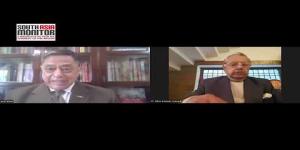

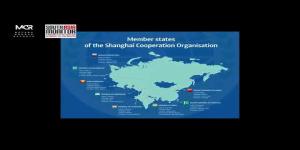

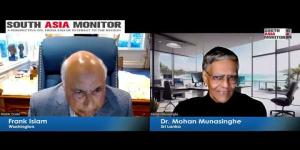
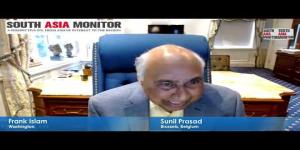
Post a Comment